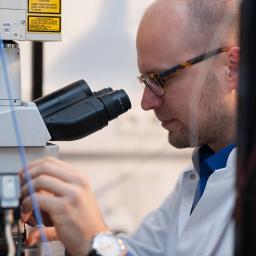 |
by brian wang on (#2XTHW)
Scientists from the Technical University of Munich has used a BACE inhibitor drug reduces the amount of amyloid beta in the brains of mice and restores the normal function of nerve cells and significantly improves memory. Around 50 million people worldwide suffer from dementia. To date, no effective drug is available that is able to halt or cure the disease. Moreover, the exact causes of the disease have yet to be definitively explained. However, there is a greater accumulation of the protein amyloid beta in Alzheimer’s patients than in healthy people. As a result, the protein clumps together and damages
|
 NextBigFuture.com
NextBigFuture.com
| Link | https://www.nextbigfuture.com/ |
| Feed | http://feeds.feedburner.com/blogspot/advancednano |
| Updated | 2025-12-19 12:34 |
 |
by brian wang on (#2XTG9)
Laser SETI is an audacious project to place specialized cameras around the globe to look for laser flashes from deep space. They have raised $53,000 of a $100,000 Indiegogo campaign. This is the first project ever to scan the *whole sky all the time* for signals from an extraterrestrial civilization. Laser SETI makes this possible by using multiple, redundant, and inexpensive detectors, located strategically around the globe. And experiments of the past two years have shown that this technology works. The Laser SETI campaign will fund the remaining development and the installation of two detectors in a fully operational observing
|
 |
by brian wang on (#2XTDY)
Centauri Dreams that Jordin Kare has died at the age of 60 due to aortic heart valve failure. He was involved in developing laser propulsion concepts. As a physicist and aerospace engineer, Kare focused primarily on laser propulsion, both from ground-to-orbit and deep space perspectives. A long-time researcher at Lawrence Livermore National Laboratory, he put together an early laser propulsion workshop at LLNL in 1986; his work on laser launch from ground to orbit drew support from the Strategic Defense Initiative. He designed a laser sail system called SailBeam and a ‘fusion runway’ concept. The gist of the sailbeam idea
|
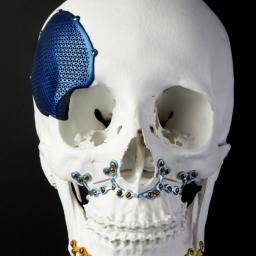 |
by brian wang on (#2XRVD)
Doctor Lantieri does more than mend broken bones; he tries to help his patients look as close to normal as possible. In the past, he spent long hours in the operating room, opening hundreds upon hundreds of boxes of generic plates, casts and screws, searching for the best fit for patients. Despite his painstaking work, he often felt frustrated because of the off-the-shelf parts he had to use: “Before we were just guessing, trying to do it with the CT scan and using standard material … it was complicated, we never had the correct, perfect shape.†That’s starting to change.
|
 |
by brian wang on (#2XRQX)
Elon Musk tweeted out a new Spacex Falcon Heavy launch date. It is now planned for November, 2017. Elon Musk has said that combining three Falcon 9 cores will triple the amount of vibrations and acoustics the rocket will experience during launch. Spacex had to restructure the center core to handle the new loads. SpaceX has only been able to test the three boosters separately up until now. But all three rockets — adding up to 27 engines — will need need to ignite simultaneously for the Falcon Heavy to fly. This has never tried before and Spacex does not
|
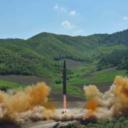 |
by brian wang on (#2XRAP)
North Korea has launched “one unidentified missile†from its northern Jagang province, the South Korean Defense Ministry announced in a statement. The missile flew for about 45 minutes and appeared to have landed in the waters of Japan’s exclusive economic zone. The missile may have landed within 230 miles of Japan’s coast, Japanese Prime Minister Shinzo Abe said. Experts say North Korea currently is known to have the capability to send missiles to all of South Korea, Japan, as well as to Guam. And the July 4 test-firing of its first intercontinental ballistic missile indicated the regime also might be
|
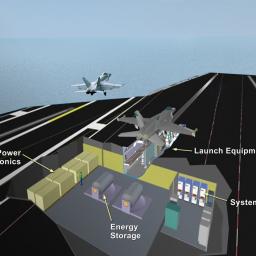 |
by brian wang on (#2XR7Q)
The US Navy completed testing on a software fix for its Electromagnetic Aircraft Launch System (EMALS) that will allow the heaviest planes to take off with less stress to the airframe, Naval Air Systems Command (NAVAIR) announced this week. The EMALS team found during April 2014 testing that airplanes carrying full 480-gallon wing-mounted external fuel tanks were experiencing a great amount of stress on the airframe. The software fix will now allow EMALS to handle the upper limit of its workload – the heaviest planes, Super Hornets and EA-18G Growlers with full external fuel tanks – without exceeding stress limits
|
 |
by brian wang on (#2XR7S)
Breakthrough Starshot brings the Silicon Valley approach to space travel, capitalizing on exponential advances in key areas of technology since the beginning of the 21st century. The nanocraft concept, combining light beamer, lightsail and StarChip, is by far the most plausible system for launching a realistic mission to Alpha Centauri within a generation. The key elements of the proposed system design are based on technology either already available or likely to be attainable in the near future under reasonable assumptions. Breakthrough Starshot has been provided $100 million in funding and currently has precursor chipsats in orbit. Nanocrafts Nanocrafts are gram-scale
|
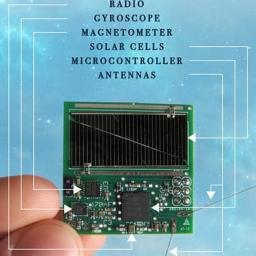 |
by brian wang on (#2XQWB)
Breakthrough Starshot plans to launch a fleet of tiny interstellar chipsize probes to Proxima Centauri in 30 or 40 years. Small chip probes have been launched into low Earth orbit on June 23. Sprites are ‘satellites on a chip,’. Research performed by Mason Peck and his team at Cornell University included Breakthrough Starshot’s Zac Manchester Zac used a Kickstarter campaign to develop the concept in 2011. These are the smallest fully functional space probes ever put into space. Each 3.5-by-3.5 centimeter probe built upon a single circuit board and weighing in at just four grams. A Sprite can contain solar
|
 |
by brian wang on (#2XQCD)
SpaceX, the rocket maker founded by billionaire Elon Musk, has raised up to $350 million in new financing and is now valued at around $21 billion, making it one of the most valuable privately held companies in the world. Five companies based in the United States that are valued at more than $20 billion — including Uber, Airbnb and WeWork — have upended established industries like transportation and real estate. Palantir, the analytics company that is in the $20 billion-plus valuation club, is vying to become a major government contractor, as is SpaceX. Elon Musk has about 54% of Spacex
|
 |
by brian wang on (#2XNH9)
Nearly a fifth of the $94 trillion in global infrastructure investment needed by 2040 risks being unfunded if current spending trends continue according to the G20-backed Global Infrastructure Hub. To close the spending gap, annual infrastructure spending needs to rise to 3.5 percent from 3 percent of global gross domestic product. The GIH, set up by the G20 in 2014, aims to help to increase opportunities for public and private investment in infrastructure around the world. It is funded by governments including Britain, Australia, China, Korea and Singapore. Every year, $3.7 trillion needs to be invested in infrastructure to meet
|
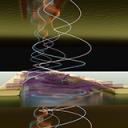 |
by brian wang on (#2XNHB)
Strong light-matter coupling in these semiconducting tubes may hold the key to electrically pumped lasers Light-matter quasi-particÂles can be generated electrically in semiconducting carbon nanotubes. Material scientists and physicists from Heidelberg University (Germany) and the University of St Andrews (Scotland) used light-emitting and extremely stable transistors to reach strong light-matter coupling and create exciton-polaritons. These particles may pave the way for new light sources, so-called electrically pumped polariton lasers, that could be manufactured with carbon nanotubes. These findings, published in “Nature Materialsâ€, are the result of a cooperation between Prof. Dr Jana Zaumseil (Heidelberg) and Prof. Dr Malte C. Gather
|
 |
by brian wang on (#2XNGF)
University of Arizona engineers are installing three 20-foot-long tubes for a new high-speed wind tunnel in the Aerospace and Mechanical Engineering Building. The Office of Navy Research (ONR) funded them with $2 million to study problems of instability and materials failure for aircraft and missiles flying at highly supersonic, or hypersonic, speeds of Mach 5 and above. High-Level Testing The wind tunnel under construction, expected to be ready for testing in spring 2018, is a low-disturbance, or quiet, Mach 4 tunnel. A second quiet tunnel, slated for completion in 2020, will shoot bursts of air at Mach 5, five times
|
 |
by brian wang on (#2XNB5)
Cambridge researchers have shown that energy-efficient superconductors can power super energy efficient spintronics devices. What once seemed an impossible marriage of superconductivity and spin may be about to transform high performance computing. In 2016, IBM found that humans now create 2.5 quintillion bytes of data daily. From the start of this decade to its end, the world’s data will increase 50 times over. The basic building blocks of electronic devices, such as the transistor, work by moving packets of charge around a circuit. A single unit of charge is an electron, and its movement is governed by semiconductors, commonly made
|
 |
by brian wang on (#2XNB7)
Researchers have designed a novel computing system made solely from carbon that might one day replace the silicon transistors that power today’s electronic devices. It is a spintronic device that could eventually operate as much as 1000 times faster than current processors. “The concept brings together an assortment of existing nanoscale technologies and combines them in a new way,†said Dr. Joseph S. Friedman, assistant professor of electrical and computer engineering at UT Dallas who conducted much of the research while he was a doctoral student at Northwestern University. It exploits the magnetoresistance property of graphene. The device is like
|
 |
by brian wang on (#2XN4Z)
The first known attempt at creating genetically modified human embryos in the United States has been carried out by a team of researchers in Portland, Oregon. Three previous reports of editing human embryos were all published by scientists in China. The US work is believed to have broken new ground both in the number of embryos experimented upon and by demonstrating that it is possible to safely and efficiently correct defective genes that cause inherited diseases. The US Crispr gene editing has convincingly shown that it is possible to avoid both mosaicism and “off-target†effects, as the CRISPR errors are
|
 |
by brian wang on (#2XN51)
A team of architects and chemists from the University of Cambridge has designed super-stretchy and strong fibers which are almost entirely composed of water, and could be used to make textiles, sensors and other materials. The fibers, which resemble miniature bungee cords as they can absorb large amounts of energy, are sustainable, non-toxic and can be made at room temperature. This new method not only improves upon earlier methods of making synthetic spider silk, since it does not require high energy procedures or extensive use of harmful solvents, but it could substantially improve methods of making synthetic fibers of all
|
 |
by brian wang on (#2XM7W)
Facebook’s and Alphabet Inc.’s Google took 99% of the online ad industry’s growth last year, according to Pivotal Research. Facebook predicted that growth would slow in the second half of 2017. This month, Facebook started showing ads in its Messenger chat app and introducing ads in Marketplace, a Craigslist-like feature in the core Facebook app. Facebook has also been testing “ad breaks†in the middle of Facebook videos and ramping up ads in its photo-sharing app Instagram. Facebook is also investing in more lucrative ad products to help the company generate more money from every ad unit sold. In the
|
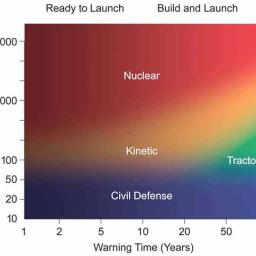 |
by brian wang on (#2XJM1)
There is a CBS TV show called Salvation about a 7000 meter wide asteroid that will hit the Earth within 6 months. The show chooses to try to use an EMdrive, a propellantless propulsion system to deliver a gravity deflection mission to divert the asteroid. EMdrive is under some experimental study and there is some experiments which seem to indicate millinewtons of thrust per kilowatt. There are rumors that an EMdrive was flown in space by China and by the US Air force but there is no confirmation that the systems really work or that there have been any space
|
 |
by brian wang on (#2XJ2T)
Duchenne muscular dystrophy (DMD) is an incurable X-linked muscle-wasting disease caused by mutations in the dystrophin gene. Gene therapy using highly functional microdystrophin genes and recombinant adeno-associated virus (rAAV) vectors is an attractive strategy to treat DMD. Here we show that locoregional and systemic delivery of a rAAV2/8 vector expressing a canine microdystrophin (cMD1) is effective in restoring dystrophin expression and stabilizing clinical symptoms in studies performed on a total of 12 treated golden retriever muscular dystrophy (GRMD) dogs. Locoregional delivery induces high levels of microdystrophin expression in limb musculature and significant amelioration of histological and functional parameters. Systemic intravenous
|
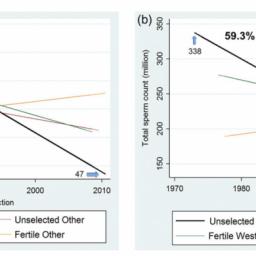 |
by brian wang on (#2XHXZ)
The first systematic review and meta-analysis of trends in sperm count reports a significant decline in sperm concentration and total sperm count among men from Western countries. The study is published today in Human Reproduction Update, the leading journal in the fields of Reproductive Biology and Obstetrics and Gynecology. By screening 7,500 studies and conducting a meta-regression analysis on 185 studies between 1973 and 2011, the researchers found a 52.4 percent decline in sperm concentration, and a 59.3 percent decline in total sperm count, among men from North America, Europe, Australia and New Zealand who were not selected based on
|
 |
by brian wang on (#2XHRA)
Russia is building two new icebreakers designed patrol the Arctic Ocean, capable of smashing through five feet of sea ice and Russia will add 30 to 200 kilowatt high-powered lasers. Russia began construction of two Project 23550, the Ivan Papanin-class icebreakers. The two ships will displace about 8,500 tons, about the size of modern destroyers, but much of that weight is due to the reinforced hull needed by icebreakers to plow through thick sea ice. Dimensionally, the Papanin class will be only about the size of a frigate. The ships will carry one AK-176MA 3-inch multipurpose deck gun (76.2-millimeter), a
|
 |
by brian wang on (#2XHJS)
The US government does not want new helicopter replacements to be built with closed proprietary systems. Open architecture is typically defined as the military’s push to create a universal set of standards for weapon systems that industry shares. An open architecture platform makes it easier for the military to modifications, upgrade and add on to weapon systems. The US military is trying to establish open standards during the Future lift program design phase.
|
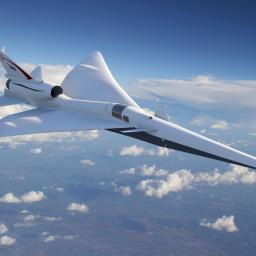 |
by brian wang on (#2XHJV)
NASA is proposing to spend $390 million over five years to build a demo quiet supersonic plane and test it over populated areas. NASA plans to share the technology resulting from the tests with U.S. plane makers, meaning a head start for the likes of Lockheed Martin, General Dynamics, Boeing, and startups such as Boom Technology and billionaire Robert Bass’s Aerion. Lockheed helped create NASA’s design, using fluid dynamics modeling made possible in the past decade or so by increasingly powerful computers. Together, Lockheed and NASA tested and mapped how subtle differences in aircraft shapes affect the supersonic shock waves
|
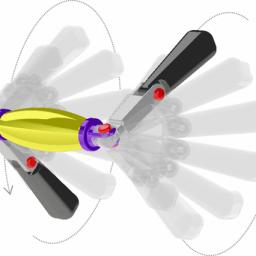 |
by brian wang on (#2XHAX)
The unique swimming strategies of natural microorganisms have inspired recent development of magnetic micro/nanorobots powered by artificial helical or flexible flagella. However, as artificial nanoswimmers with unique geometries are being developed, it is critical to explore new potential modes for kinetic optimization. For example, the freestyle stroke is the most efficient of the competitive swimming strokes for humans. Here we report a new type of magnetic nanorobot, a symmetric multilinked two-arm nanoswimmer, capable of efficient “freestyle†swimming at low Reynolds numbers. Excellent agreement between the experimental observations and theoretical predictions indicates that the powerful “freestyle†propulsion of the two-arm nanorobot
|
 |
by brian wang on (#2XH1F)
Google is helping the Tri-alpha energy nuclear fusion project with improved algorithms, sensor data analysis and simulations. Google developed a new computer algorithm that significantly speeds up progress. The team achieved a 50% reduction in energy losses from the system and a resulting increase in total plasma energy, which must reach a critical threshold for fusion to occur. Tri-alpha runs a real plasma “shot†on the C-2U machine every 8 minutes. Each shot consists of creating two spinning blobs of plasma in the vacuum sealed innards of C-2U, smashing them together at over 600,000 miles per hour, creating a bigger,
|
 |
by brian wang on (#2XFDK)
A new way of producing the seasonal flu vaccine could speed up the process and provide better protection against infection. For decades, vaccine manufacturers have used chicken eggs to grow the flu virus strains included in the seasonal flu shot. But because these human strains frequently mutate to adapt to their new environment in eggs, the resulting vaccine is often an imperfect match to the actual virus that it is supposed to protect against. Duke researchers have devised a way to keep the human influenza virus from mutating during production, generating a perfect match to the target vaccine in a
|
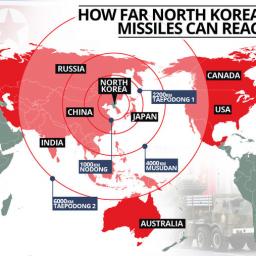 |
by brian wang on (#2XFBE)
North Korea should be able to finish a missile that can reach the continental United States within one year, according to several administration officials briefed on the new assessment by US Intelligence agencies. Until a few weeks ago, the official estimate was that it would take roughly four years, give or take 12 months, for North Korea to develop a missile that could carry a nuclear weapon small enough to fit into the missile’s warhead and capable of surviving the stresses of re-entry and deliver it to the United States. But the realities of the past few months, especially a
|
 |
by brian wang on (#2XEJW)
The US Air Force will award an engineering, manufacturing and development contract in early fiscal year 2018 to either Boeing, Lockheed Martin, Northrop Grumman, Orbital ATK or Raytheon. Only those companies could produce the weapon within the USAF’s timeframe, according to a 21 July notice of contract action on the US Federal Business Opportunities website. The hypersonic conventional strike weapon will provide a precision strike capability against fixed and moving targets in an anti-access, area-denial environment using Global Positioning System and Inertial Guidance System navigation. It will be shot from existing fighter jets and bombers. There will be other contracts
|
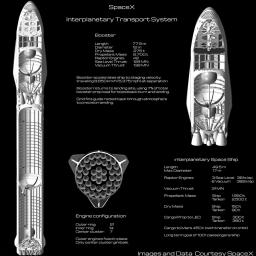 |
by brian wang on (#2XEFY)
Elon Musk has said that he has changed his plans for Mars landing craft and Mars colonization. He will not use a dragon capsule for Mars. It is believed that the design for the Interplanetary Transport System revealed in 2016 has been changed. The new Mars launch system will likely be 9 meters in diameter instead of 12 meters. This will allow it to be built in the current Spacex factories. This will likely mean 21 raptor engines and not 42 engines like in the 2016 design. The 2016 ITS had a very large crew section. It is not clear
|
 |
by brian wang on (#2XEG0)
Elon Musk says Mark Zuckerberg’s understanding of Artificial Intelligence is limited. Elon Musk has warned that there needed to be regulation on AI development before it’s too late. “I keep sounding the alarm bell, but until people see robots going down the street killing people, they don’t know how to react, because it seems so ethereal,†he said, adding that the technology represents a “fundamental risk to the existence of civilization.†Zuckerberg thinks you can build things and the world gets better, and with AI especially, Zuckerberg is really optimistic. He think people who are naysayers and try to drum
|
 |
by brian wang on (#2XEB3)
Two separate scientific studies determined that the Earth mantle contains a lot of water in the form of water bearing rock and the moon’s mantle and volcanic rock deposits on the moon contain a lot of water in water bearing rock. Previously the moon’s interior was believed to not hold any water and previously the Earth’s mantle was believed to hold a lot less water in water bearing rock. The moon’s water deposits will have a large impact on future human colonization of the moon and for providing water converted into fuel for space missions all over the solar system.
|
 |
by brian wang on (#2XE8C)
New work by Lawrence Livermore National Laboratory (LLNL) scientists shows the dispersal of water (incorporated as hydrogen in olivine, the most abundant mineral in the upper mantle), could account for high electrical conductivity seen in the asthenosphere (part of the upper mantle just below the lithosphere that is involved in plate tectonic movement). Minerals formed deep in the mantle and transported to the Earth’s surface contain tens to hundreds of parts per million in weight (ppm wt) of water, providing evidence for the presence of dissolved water in the Earth’s interior. Even at these low concentrations, water greatly affects the
|
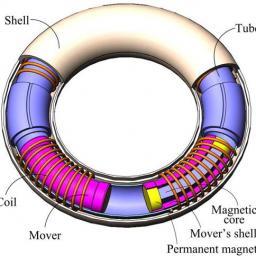 |
by brian wang on (#2XDSW)
A bracelet harvests energy from the wearer’s wrist movements. This energy can be converted into electricity and used to extend the battery lifetime of personal electronics or even fully power some of these devices. An energy harvesting bracelet (EHB) based on two mutually exclusive circular motion permanent magnetic movers is demonstrated, which is able to capture energy through the natural motions of the wearer’s wrist. The EHB can transform the translational motion in any orientation except the axial into the rotational motion of the movers, which passes through four coil transducers and induces significantly large electro-motive forces across the coils.
|
 |
by brian wang on (#2XC1P)
Researchers at North Carolina State University have significantly increased the temperature at which carbon-based materials act as superconductors, using a novel, boron-doped Q-carbon material. The previous record for superconductivity in boron-doped diamond was 11 Kelvin, or minus 439.60 degrees Fahrenheit. The boron-doped Q-carbon has been found to be superconductive from 37K to 57K, which is minus 356.80 degrees F. “Going from 11K to 57K is a big jump for conventional BCS superconductivity,†says Jay Narayan, the John C. Fan Distinguished Chair Professor of Materials Science and Engineering at NC State and senior author of two papers describing the work. BCS
|
 |
by brian wang on (#2XBJD)
Laboratory analyses of lunar samples provide a direct means to identify indigenous volatiles and have been used to argue for the presence of Earth-like water content in the lunar interior. Some volatile elements, however, have been interpreted as evidence for a bulk lunar mantle that is dry. Here we demonstrate that, for a number of lunar pyroclastic deposits, near-infrared reflectance spectra acquired by the Moon Mineralogy Mapper instrument onboard the Chandrayaan-1 orbiter exhibit absorptions consistent with enhanced OH- and/or H2O-bearing materials. These enhancements suggest a widespread occurrence of water in pyroclastic materials sourced from the deep lunar interior, and thus
|
 |
by brian wang on (#2XBJF)
A novel screening method developed by a team at Dana-Farber/Boston Children’s Cancer and Blood Disorders Center — using CRISPR-Cas9 genome editing technology to test the function of thousands of tumor genes in mice — has revealed new drug targets that could potentially enhance the effectiveness of PD-1 checkpoint inhibitors, a promising new class of cancer immunotherapy. Researchers report that deletion of the Ptpn2 gene in tumor cells made them more susceptible to PD-1 checkpoint inhibitors. PD-1 blockade is a drug that “releases the brakes†on immune cells, enabling them to locate and destroy cancer cells. “PD-1 checkpoint inhibitors have transformed
|
 |
by brian wang on (#2XAGW)
Three Square Market claims it will be the first company in the United States to implant chips in its employees. RFID (Radio Frequency ID) chips would allow those employees who volunteer to participate in the program to open doors, pay for purchases, share business cards, store medical information, pay for stuff at other RFID terminals and login to their computers … all with a wave of the hand. The company is expecting over 50 staff members to be voluntarily chipped. 32M is partnering with BioHax International and Jowan Osterland, CEO, based out of Sweden.
|
 |
by brian wang on (#2XADY)
Silicon Valley startup Helix will sequence your genes for $80 and lure app developers to sell you access to different parts of it. For an initial $80, Helix sequences the most important part of the genome—about 20,000 genes plus some other bits—called the exome. That information is digitized and stored by Helix, which doles out pieces of the information to companies selling other apps through Helix. “It’s our goal that someone will have a lifelong relationship with their DNA data,†Thurston says. Previously exome sequencing cost several hundred to more than a thousand dollars. Helix was founded in 2015 with
|
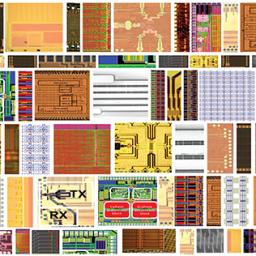 |
by brian wang on (#2XAAK)
The Department of Defense’s proposed FY 2018 budget includes a $75 million allocation for DARPA in support of a new, public-private “electronics resurgence†initiative. The initiative seeks to undergird a new era of electronics in which advances in performance will be catalyzed not just by continued component miniaturization but also by radically new microsystem materials, designs, and architectures. The new funds will supplement the Agency’s FY 2018 R andD portfolio in electronics, photonics, and related systems to create a coordinated effort valued at more than $200 million, to be further supplemented by significant commercial sector investments. Among the new fronts
|
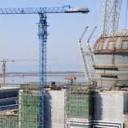 |
by brian wang on (#2XAAN)
Three new nuclear power reactors in China have passed significant pre-operational tests and inspections. * Sanmen 1 passed a comprehensive safety check ahead of fuel loading * a containment integrity test was completed at Haiyang 2. * cold function tests were completed at Yangjiang 5. Four AP1000 units are under construction in China – two each at Sanmen and Haiyang – and are all scheduled to start commercial operation in 2018. Sanmen will be the first. Tests on the containment vessel at another AP1000 unit under construction in China – unit 2 of the Haiyang plant in Shandong province –
|
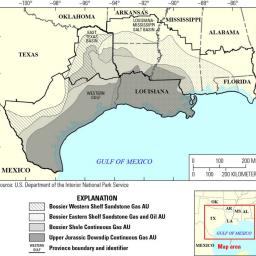 |
by brian wang on (#2X8Z8)
The Bossier and Haynesville Formations of the onshore and State waters portion of the U.S. Gulf Coast contain estimated means of 4.0 billion barrels of oil, 304.4 trillion cubic feet of natural gas, and 1.9 billion barrels of natural gas liquids, according to updated assessments by the U.S. Geological Survey. These estimates, the largest continuous natural gas assessment USGS has yet conducted, include petroleum in both conventional and continuous accumulations, and consist of undiscovered, technically recoverable resources. The Bossier and Haynesville Formations lie within the Gulf Coast Basin, which extends from the Texas-Mexico border in the west to the Florida
|
 |
by brian wang on (#2X8XS)
According to calculations by Gilbert Masters, Stanford Professor of Civil and Environmental Engineering, Emeritus, current oil supplies in all nations combined would last the world for only about 41 years. Gilbert Masters neglected to mention that this is based on the assumption that oil and gas firms stopped trying to find new oil and stopped trying to improve how they extract oil. The world is using about 95 million barrels of oil per day which is about 35 billion barrels per year. This was about the pace of oil usage since the 1990s but most years the new oil discovered
|
 |
by brian wang on (#2X8CB)
Stargate Origins will focus on Catherine Langford, the scientist whose lifelong obsession with alien hieroglyphs unearthed on her father’s archaeological expedition led to the events that kick off the 1994 film Stargate. Langford then recurred as a character throughout the long-running TV series Stargate SG-1, which aired on the Sci-Fi network (before it was renamed Syfy) from 1997 through 2007. Now she gets her own 10-episode prequel web series exploring her life, her adventures, and maybe even her grand romance. A new digital streaming service, Stargate Command, that will host the new show.
|
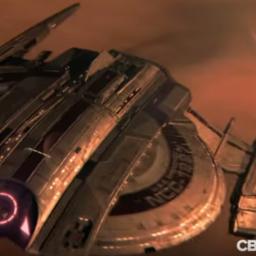 |
by brian wang on (#2X8CD)
Star Trek: Discovery premieres September 24th on CBS All Access.
|
 |
by brian wang on (#2X8B1)
Thor Ragnarok will be the third Thor movie. The release dates for upcoming Marvel movies are. Thor: Ragnarok release date: Nov 3, 2017 Black Panther release date: Feb 16, 2018 The Avengers: Infinity War release date: May 4, 2018 Ant-Man & The Wasp release date: Jul 6, 2018 Captain Marvel release date: Mar 8, 2019 The Avengers 4 / Untitled Avengers Movie release date: May 3, 2019 Untitled Spider-Man: Homecoming Sequel release date: Jul 5, 2019
|
 |
by brian wang on (#2X89S)
Harvard and MIT are making a wide variety of robots. Swarming bots Soft bots Insect bots Folding bots Here are some videos of them
|
 |
by brian wang on (#2X7KG)
Due to the continuous improvement of scanning probe microscopy techniques, the long thought inaccessible goal of inducing and visualizing chemical reactions at the atomic scale is now routinely achievable by many groups around the world. In the framework of so-called mechanochemistry, mechanical force induced reactions have been studied using NCAFM. Recent works reported force induced atomic-scale switching, quantitative force measurements to induce the diffusion of single atoms and molecules, as well as studying molecular conformers and tautomerization. A few earlier studies also showed examples of mechanically induced vertical manipulation of single atoms.
|
 |
by brian wang on (#2X7HV)
Harvard’s George Whitesides and Alex Nemiroski, a former postdoctoral fellow in Whitesides’ Harvard lab, have created a type of semi-soft robot capable of standing and walking. The team also created a robotic water strider capable of pushing itself along the liquid surface. The robots are described in a recently published paper in the journal Soft Robotics. Unlike earlier generations of soft robots, which could stand and awkwardly walk by inflating air chambers in their bodies, the new robots are designed to be far nimbler. Though real-world applications are still far off, the researchers hope the robots eventually could be used
|
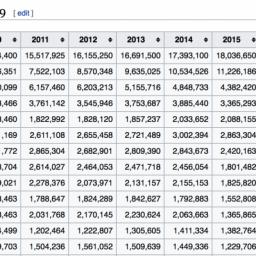 |
by brian wang on (#2X6WK)
In July 2017, China’s statistics bureau has revised the way it calculates the country’s gross domestic product by including contributions from healthcare, tourism and “new economyâ€. This move increased the total of 2015 GDP by 1.3 percent to 68.55 trillion yuan ($10.3 trillion), but that year’s growth rate was only marginally amended and basically remained 6.9 percent. The calculation of China’s GDP for the first half of 2017 has not been affected, and stood at about 38.2 trillion yuan ($5.6 trillion), up 6.9 percent year-on-year. Global Credit rating agency Fitch said in its most recent Global Economic Outlook (GEO) that
|